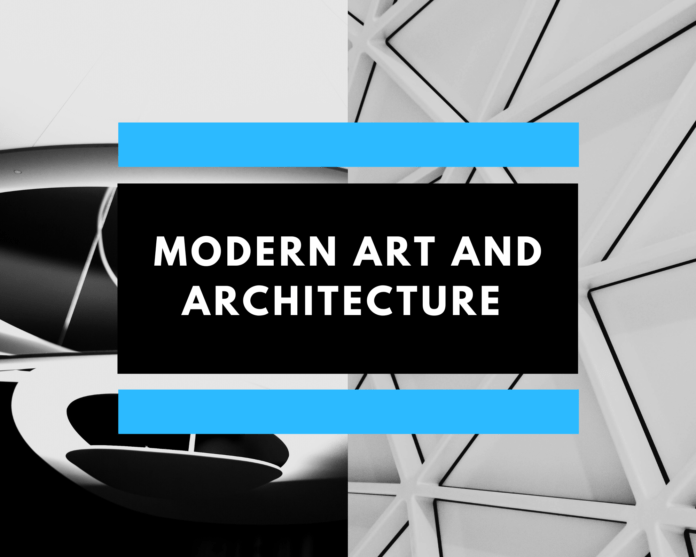Over the years, architectural rendering styles have changed rapidly. Designing, refining, and visualizing buildings has never been so fast and easy thanks to leaps in hardware and software. When you’re ready, you can share your designs in bold, immersive new ways.
This article analyzes the latest architectural rendering styles, from exciting new technologies to new ways of applying and experiencing spaces. Bonus points for your work if you can create architectural viz projects that take advantage of all the trends.
1. Real-time rendering
It is true that a picture is worth a thousand words. But architectural design is a space that can and should be appreciated from all angles. Although animation can attract the eye, it does not dissuade us from appreciating the space and wanting to stay there for a few more seconds.
Let customers experience freely in real time; when you are in it, return to reality and imagine the story. Real-time also allows designers and architects to evaluate, review and redesign proposals in a more detailed and precise manner.
In the field of the Latest Architectural Rendering Styles, two major technical solutions can exchange computing costs for the real-time experience; “rasterization” and “ray tracing”, each of these two technologies provide us with different image quality.
Rasterized visual output can be the perfect solution during design, review, and analysis. V-Ray Vision is the raster engine available in V-Ray 5 for SketchUp, Revit, and Rhino.
On the other hand, ray tracing technology, due to its photorealistic quality, is the perfect solution for the final project.
2. Animation
When the finished product has a dynamic display, everything will be better. The production of architectural projects with a stunning narrative and cinematic texture will never stop, as this is the best way to express design and art.
Arch viz artists are seeking to improve production methods every day, from simple full CG panning to large-scale live-action productions. Of course, in addition to dubbing, 3D animation is also incredible.
V-Ray can be seamlessly integrated into the most popular 3D animation platforms in the construction industry, such as 3ds max, Cinema 4D and Maya. In an animation workflow, footage must be constantly revised.
3. Virtual reality
Virtual reality has been everyone’s dream since the mid-90s—and today virtual reality is real. Immersive experiences can be so realistic that our brains are tricked into making them seem real.
Today’s studios use the experience to share and exchange creative ideas before building at the proper scale. For example, architectural visualization artists in interior design often create VR cameras to show concepts, and clients love them.
Additionally, the readily available mobile devices, such as smartphones and tablets, make creating immersive experiences inexpensive. While lacking the quality of dedicated hardware, the experience is still an important added value.
4. Light Mix
In rendering, light is everything. To achieve realistic imagery, we must first consider how the scene is lit.
Because the V-Ray rendering system allows the light to be mixed and adjusted, we can create a variety of lighting situations from a single rendering; whether it is natural, artificial, or both, it can provide different effects for the design space. Feel.
This process allows us to change the mood of an architectural project in real-time. We can emphasize lighting design, or simply see how intelligent algorithms turn on lights and change colors, just like we do in real-life smart homes.
The new V-Ray Frame Buffer window in V-Ray 5 gives artists complete lighting control to express the best lighting possible, turning daytime scenes into nighttime scenes in an instant.
5. Atmospheric and Atmospheric Effects
Atmospheric effects and weather in the real world bring photos to life – and we can replicate the same dramatic conditions in CG.
A few years ago we only saw atmospheric and weather effects in film VFX, but architectural visual artists have better technical knowledge and studios are investing in new ways to create even more stunning artwork.
Today, we can create all the conditions in the architectural rendering process, such as the humidity of the morning in the mountains, the light of Jesus when the sun breaks through the clouds, the calming rainy day, the fireplace fire on the wall, liquid, and warming us in the wild campfire.
6. Sustainable building methods and natural spaces
Recent events and the role of humans in the world dictate that our designs must be in harmony with nature. Every time we see architectural design and construction competitions from around the world, we are always happy to see sustainable projects.
The concept of natural spaces challenges us, visualization artists, to faithfully represent nature. A realistic interior space in a minimalist style is different from a green space, where plants, earth, and sustainable materials must be represented in their best form.
High-quality 3D plant assets are a must for projects. Fortunately, today we have a wide variety of detailed models, including photogrammetry-based models and scanned textures.
7. NFTs and the Metaverse
Non-Fungible Tokens (NFTs) and Metaverse are all the rage these days, opening up a new world for creatives, architects, and designers who are developing and experimenting with new images.
Most importantly, it allows artists to sell their work for unimaginably high prices, as we have already seen in the case of Krista Kim’s The House on Mars.
One glance at the NFT platform realizes constant experimentation in visual style, shape, form, space…etc. Here, more than in any other field, creativity and technology are the most important factors.
On the other hand, the Metaverse, which large development companies such as Facebook and Microsoft are focusing on, is creating “alternative realism” that brings everyone together in new ways.
Conclusion
Visual artists are creators of current trends. Our job roles and constant artistic creation and technological exploration force us to create, adapt and recreate in a constant cycle. With the metaverse and NFTs, the new creative universe is just beginning, and it’s exciting to think about what we’ll be able to create in the near future.
Related Articles:
